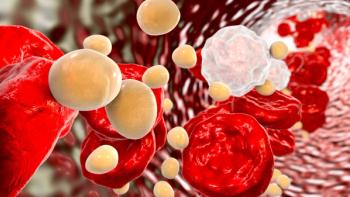
Chemotherapy and Liver Tumors in Pediatric Patients
Researchers determine there may be an opportunity to reduce chemotherapy in pediatric patients with hepatoblastoma.
Researchers determine there may be an opportunity to reduce chemotherapy in pediatric patients with hepatoblastoma.
Pediatric hepatoblastoma patients may be able to avoid unnecessary chemotherapy in many cases, which could reduce adverse events significantly, according to a recent study.
The study, published online last week in the British Journal of Surgery, found that chemotherapy could be reduced in up to 65% of these patients if tumors could not be resected following 2 cycles of treatment. Surgical resection of the primary tumor, regardless of whether performed immediately or following one to several rounds of chemotherapy, is essential.
"Thirty percent of liver tumors are initially too large for resection and need to be reduced with chemotherapy prior to surgery," said senior investigator Leo Mascarenhas, MD, in a press release.
In examining previous studies, it was suggested that the effectiveness of chemotherapy may plateau after 2 cycles, however.
Researchers hypothesized that surgical resectability would not improve with further chemotherapy in tumors unable to be resected following 2 cycles. The researchers examined retrospective imaging studies for 20 pediatric patients with stage 3 or stage 4 hepatoblastoma, treated between 1991 and 2008.
"Because of the adverse effects of chemotherapy, including compromised hearing, kidney and cardiac function, the current consensus is to resect the liver tumor following 4 cycles of chemotherapy and to attempt early resection if tumors are amenable to surgical management after 2 cycles of chemotherapy,” Mascarenhas said. “If the tumor is not surgically resectable after 4 cycles, it is recommended that a liver transplant be pursued instead of additional chemotherapy."
Following a review of 57 scans from the patients, it was found that only 4 of the tumors were considered unresectable after a maximum of 4 chemotherapy cycles. The number of tumors deemed unresectable decreased from 80% at initial diagnosis to 35% after 2 cycles, and to 20% following 4 cycles.
Patients who currently undergo resection after 2 cycles continue to receive 4 additional chemotherapy cycles following surgery. The findings of the study suggest earlier surgery and reduced chemotherapy post-surgery may lead to an overall reduction in adverse events from chemotherapy.
The researchers concluded surgery can be attempted after 2 cycles of chemotherapy in a significant number of cases.
"Nearly half of the tumors considered inoperable after just two cycles of chemotherapy were actually resectable after four," Dr. Mascarenhas said. "This is in contrast to our own hypothesis, based on prior observations of tumor response to chemotherapy."
Newsletter
Stay informed on drug updates, treatment guidelines, and pharmacy practice trends—subscribe to Pharmacy Times for weekly clinical insights.



















































































































































































































